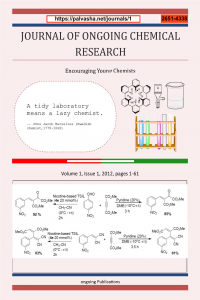GEOLOGICAL, MINERALOGICAL, GEOCHEMICAL PROPERTIES, AND CHARACTERIZATION OF MARINE ZEOLITE
GEOLOGICAL, MINERALOGICAL, GEOCHEMICAL PROPERTIES, AND CHARACTERIZATION OF MARINE ZEOLITE
Marine Zeolite, Clay, Clinoptilolite Mesopore,
___
- 1. Y.Yükselen Aksoy, Characterization of two natural zeolites for geotechnical and geoenvironmental applications. Appl. Clay Sci. 50 (2010) 130-136.
- 2. Y. Li, L. Li, J. Yu, Applications of zeolites in sustainable chemistry, Chem. 3 (2017) 928-949.
- 3. D.W. Breck, Zeolite Molecular Sieves, Structure, Chemistry and Use, John Wiley & Sons, New York, 1974.
- 4. R. Szostak, Molecular Sieves: Principles of Synthesis and Identification. Van Nostrand Reinhold, New York, 1989.
- 5. H.V. Bekkum, E.M. Flanigen, J.C. Jansen (Eds.), Introduction to Zeolite Science and Practice, Stud. Surf. Sci. Catal. Elsevier, Amsterdam, 1991, pp. 58.
- 6. J. Behin, E. Ghadamman, H. Kazemian, Recent advances in natural zeolites science and Technologies in Iran, Clay Minerals, 54 (2019) 131-144.
- 7. Barrer R M , Zeolits and clay minerals. Academic Press, London, 1978, pp. 657.
- 8. P. Wier, Zeolites: markets and opportunities, Business Communication Co. Norwalk, CT, 1997.
- 9. S.M. Auerbach, K.A. Carrado, P.K. Dutta, Handbook of Zeolite Science and Technology, Marcel Dekker Inc. New York and Basel, 2003.
- 10. M. Khosravi, H.E. Cathey, I.D.R. Mackinnon, Comprehensive mineralogical study of Australian zeolites, Microporous and Mesoporous Materials, 312 (2020) 1-13.
- 11. A. Dussan, J. A. Calderón, H.P. Quiroz, Zeolites derived from natural minerals: Solid rock and volcanic ash, Elsevier (2020) 148-149.
- 12. Y.Y. AKSOY, Characterization of two natural zeolites for geotechnical and geoenvironmental applications, Aplied Clay Science, 50 (2010) 130-136.
- 13. M. Önal, T. Depci, C. Ceylan, N. Kizilkaya, The Zeolite Deposit of Hekimhan in the Malatya Basin, World Multidisciplinary Earth Sciences symposium (WMESS), Prague, Czech Republic, 44 (2016) 1-6.
- 14. ASTM D 854-10 Standard test methods for specific gravity of soil solids by water pycnometer, The American Society for Testing and Materials, West Conshohocken, United States, 2010.
- 15. ASTM D 422 Standard test method for particlesize analysis of soils, The American Society for Testing and Materials, West Conshohocken, United States, 2007.
- 16. ASTM D 4318-10 Standard test methods forliquid limit, plastic limit, and plasticity index of soils, The American Society for Testing and Materials, West Conshohocken, United States, 2010.
- 17. J. Rouquerol, D. Avnir, C.W. Fairbridge, D.H. Everett, J.M. Haynes, N. Pernicone, J.D. F. Ramsay, K.S.W. Sing, K.K. Unger, "Recommendations for the characterization of porous solids (Technical Report)". Pure and Applied Chemistry. 66 (1994) 1739–1758.
- ISSN: 2651-4338
- Başlangıç: 2012
- Yayıncı: SciMatic Yazılımları Danışmanlık
Can sunflower honey have a protective effect against Alzheimer's disease?
GEOLOGICAL, MINERALOGICAL, GEOCHEMICAL PROPERTIES, AND CHARACTERIZATION OF MARINE ZEOLITE
An Innovative Synthesis of Nano-ZSM-5 Zeolite Through Interrupted Ultrasound
Pirzada AFRİDİ, Farrukh Arsalan SİDDİQUİ, Sergio GONZALEZ-CORTES, Liam FRANCE
